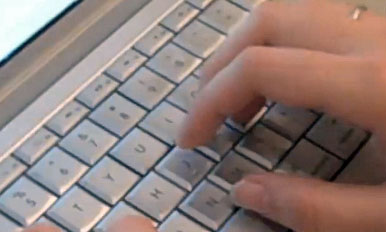Text still rules
October 2, 2009 | By | Category: Conference Track: Front EndText by Anna Bloom
Video by Martin Ricard
Words drive users of the Web, say the Internet’s wordsmiths. Bury the words in dense paragraphs or between a maze of images and users will grow impatient and change course, continuing their quest for information elsewhere.
 “Think of your Web audience as lazy, selfish and ruthless,” said Michael Gold, West Gold Editorial principal. “Web audiences are on a mission—they’re task-oriented.”
“Think of your Web audience as lazy, selfish and ruthless,” said Michael Gold, West Gold Editorial principal. “Web audiences are on a mission—they’re task-oriented.”
Gold was one of four speakers headlining “Yep, Text Still Matters,” an ONA09 discussion devoted to the craft of writing for the web.
Get Over Your Print Past
Writing for the Internet requires a clear, concise style with lots of sub headlines and bullet points and highlighting of key terms, said the panelists.
Gold, who began his career in print, was unsentimental about shaking the ways of newspapers and magazines.
“Get over it,” he told the audience. “You have to leave go of all the artifacts of print and move on.”
Text matters on the Web from Martin Ricard on Vimeo.
Text still matters on the Web from Online News Association on Vimeo.
The F Shape
If Internet users can’t find what they’re looking for, they will move on, said panelist Hoa Loranger, director of Nielsen Norman Group and author of “Prioritizing Web Usability.”
Users spend, on average, 25 seconds on a home page and only 47 seconds on secondary pages, according to her studies. This means writers and designers need to make a huge impact on a user immediately. “The first two words, the first two paragraphs, the first twos of things are very important for the Web,” Loranger said.
By way of example, Loranger directed the room’s attention to heat maps that tracked the gaze of an average user on a site. Large blobs of red peppered the map at the beginnings of paragraphs, then smaller dots marked up the rest in an “F” formation.
Subconsciously, people will skip the items they aren’t looking for and this often includes pictures that might look like glossy advertisements. Pictures can often become an obstacle course to the information a user is seeking, Loranger said. People tend to focus on words.
Take Out the Scalpel
But a wall of text is not the answer, the panelists said. Web writers need to use proper “Web format technique” to increase visibility, they said.
“More clarity and more engagement? Shouldn’t we be doing that anyway?” Gold said. “Think of writing for the human searchers.”
Gold presented before and after makeovers of articles posted on CooksIllustrated.com and nytimes.com to illustrate how to “webify” content to make it scanner-friendly. In Gold’s versions, the information remained the same, but shorter with bullet points and subheads. Images were also demoted from the top of the page to the bottom.
“Take out that editor scalpel and make it shorter,” he said. “That’s life or death stuff.”
A New Guide
Yahoo! Senior Editorial Director Christopher Barr echoed Gold’s remarks, adding a number of technical rules of his own.
- The word “email” should contain no dash (unless you follow Associated Press style, which uses “e-mail”)
- Eliminate “always” and “of the.”
- Front-load headlines and avoid puns “like the plague.”
Bar has codified these guidelines and more for his own Strunk and White for the Web. Due next summer, he reports it will contain 139,000 words.
